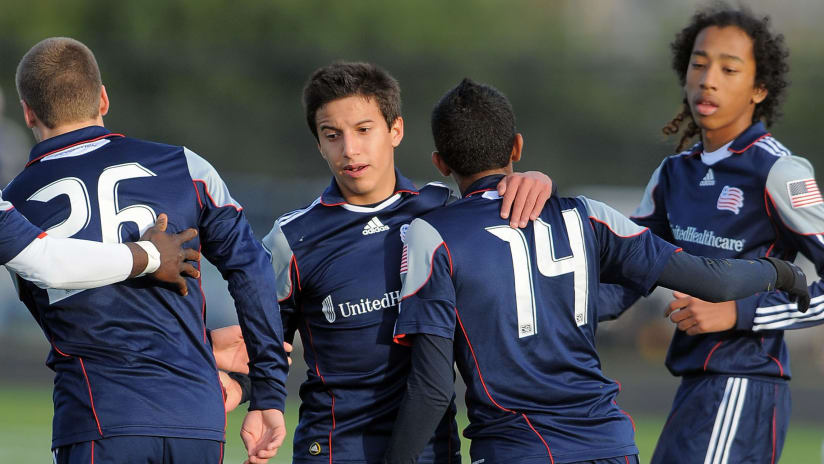FOXBOROUGH, Mass. – The foundation for the U.S. Soccer Development Academy’s move to a 10-month season was laid well before Friday’s official announcement.
Both the Western Conference and Texas Division of the Development Academy have already switched to the 10-month schedule, which features games beginning in September and running through June or July, dependent upon postseason play. Beginning in the fall of 2012, every club in the Academy will follow suit and compete in a schedule consistent with many of the top soccer nations in the world.
“This has been on U.S. Soccer’s radar for a little while now,” said the Revolution’s Director of Youth Development, Bryan Scales. “The dominoes started to fall and it was just a matter of how and when the rest of the country would kind of fall into place.”
Many of the benefits derived from the switch stem from the extended length of the season, which increases from approximately seven months (November – June) to 10 months. The elongated schedule eases fixture congestion by eliminating the need to squeeze multiple games into every weekend, while it simultaneously allows for a greater focus on training sessions and eases the physical burden on overtaxed players.
“They want to eliminate a large number of games in a small amount of time,” Scales said of U.S. Soccer’s decision. “What will happen now is the kids will have regular training during the week and then one game on the weekends.
“When we’re playing double fixture weekends – Saturday and Sunday – that takes a toll on the kids,” added Scales. “As competitive as these games are, that’s a lot to ask physically for those players.”
With the benefits come unfortunate side effects, however, the most notable being the impact on the high school soccer season. Previously, players were able to balance their Academy duties while also playing for their high school teams from August – November, but that will no longer be possible with the new 10-month schedule. In essence, players will be forced to choose between representing their high schools or playing in the Academy.
It’s a decision both Scales and General Manager Michael Burns understand won’t be taken lightly by the players and their families.
“We realize and we’re sensitive to (the fact) that it’s not going to be an easy decision for a lot of these kids,” said Burns. “We’ve always said this program is not for everyone, but we’re fully supportive of U.S. Soccer’s Academy and we know that it’s the best soccer league for youth players in this country. We’ll continue to support it and we’ll continue to be part of it.
“We’ve not had a player in three years leave our program and we’re very proud of that fact, but we are also aware that this could change the landscape and the dynamic for kids having to decide, frankly, if they want to play high school or Academy,” Burns added. “For as much as we want to attract the best players we can into our program, this is a transition period and we’re going to have to be supportive of whatever the kids decide and whatever families decide, because we know it’s difficult on them.”










